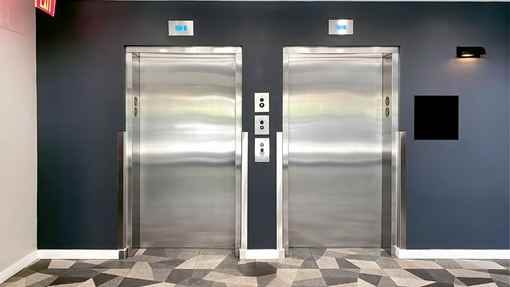Discover the very best Disabled Platform Lifts Prices UK for Residential and Commercial Use
Discover the very best Disabled Platform Lifts Prices UK for Residential and Commercial Use
Blog Article
Looking Into the World of Elevators: Usual Problems Dealt With by Numerous Lift Systems
As we navigate via the vertical transport systems of modern-day structures, lifts stand out as an important part of our daily lives. From hydraulic elevators to grip systems and machine-room-less styles, each lift kind comes with its set of typical issues.
Hydraulic Lifts
Hydraulic lifts, usually liked for low-rise buildings, utilize fluid pressure to regulate the motion of the lift car (lift repair companies). This device includes a hydraulic pump pushing oil into a cylinder, causing the elevator to relocate in the desired direction. While hydraulic elevators are known for their smooth and silent operation, they do include their own collection of common issues
One prevalent issue with hydraulic elevators is oil leak. Additionally, issues with the control system, such as defective valves or a malfunctioning pump, can trigger disturbances in the lift's movement.
Routine upkeep and punctual repair work are vital to guarantee the smooth performance of hydraulic elevators. By attending to these usual issues proactively, building proprietors can minimize downtime and make sure the safety and security and effectiveness of their vertical transportation system.
Grip Lifts
When considering vertical transportation systems in buildings, another common type apart from hydraulic elevators is the grip lift. Traction lifts run using a system of ropes and counterweights that relocate the elevator auto by gripping onto the hoist ropes. This device allows for smoother and much faster upright transportation contrasted to hydraulic systems.
Among the usual concerns faced by traction lifts is rope wear. The continuous movement of the ropes within the grip system can bring about tear and put on with time, potentially causing the lift to breakdown or end up being harmful for use. Regular assessments and upkeep of the ropes are necessary to make certain the elevator's proper functioning and security.
Another problem that traction lifts may run into is associated with the control system. Troubles with the control system can bring about problems such as unpredictable motion, hold-ups in action times, and even complete shutdowns. Regular testing and upkeep of the control system are vital to avoid such issues and guarantee the lift's dependability.
Machine-Room-Less (MRL) Elevators

Among the essential elements of MRL elevators is the portable gearless traction machine that is installed within the hoistway. This equipment effectively drives the elevator automobile without the demand for cumbersome equipment discovered in traditional traction elevators. Furthermore, MRL lifts usually utilize a weight system to balance the auto, further improving their power efficiency.
Despite their benefits, MRL elevators may deal with obstacles connected to repair and maintenance because of the restricted room for equipment setup. Access for servicing parts within the shaft can be limited, needing specialized training for service technicians. Correct upkeep schedules and normal inspections are critical to ensure the ongoing smooth procedure of MRL lifts.
Overloading and Weight Limit Issues
Straining and weight limit issues are essential concerns in elevator procedures. Elevator makers design lifts with specific weight capacities to guarantee passenger safety and security view and tools long life.
When lifts are overloaded, it places too much pressure on the motor, cable televisions, and other elements, potentially creating malfunctions or break downs. Safety and security mechanisms such as sensors and overload sensing units are in place to protect against elevators from relocating if they spot excess weight. Additionally, exceeding weight limitations can lead to raised energy intake and deterioration on the elevator system.
To minimize straining problems, developing supervisors must prominently present weight restrictions in lifts and enlighten owners on the value of adhering to these constraints - lift repair companies. Regular maintenance checks by certified technicians can likewise assist guarantee that lifts are running within secure weight parameters. By addressing overloading and weight limitation problems proactively, structure proprietors can boost elevator safety and security and efficiency
Electrical System Failures
Surpassing weight restrictions in elevators can not only lead to mechanical concerns yet additionally potentially add to electric system failings within the lift infrastructure. Electric system failures are a crucial problem in lift operation, as they can cause unexpected closures, breakdowns, or even safety and security risks.
Additionally, power rises or fluctuations in the electrical supply can additionally disrupt the elevator's procedure, influencing its efficiency and security. These electrical disruptions can harm sensitive lift parts such as control panels, circuit boards, or sensing units, causing system failings. content Normal upkeep and evaluations are important to identify and resolve possible electric problems quickly, basics guaranteeing the secure and efficient operation of lift systems. By sticking to weight limits and carrying out regular electrical system checks, structure owners can alleviate the danger of electric failings in elevators.
Conclusion

Hydraulic elevators, commonly preferred for low-rise structures, make use of fluid pressure to manage the motion of the lift cars and truck.When thinking about vertical transportation systems in structures, one more usual kind apart from hydraulic lifts is the grip elevator. Grip elevators operate making use of a system of ropes and weights that move the lift cars and truck by grasping onto the hoist ropes. Unlike standard elevators that require a separate maker area to house the devices, MRL elevators integrate many of the components within the shaft, eliminating the requirement for a dedicated machine space.In final thought, lifts encounter typical issues such as hydraulic breakdowns, traction system failures, and electrical system troubles.
Report this page